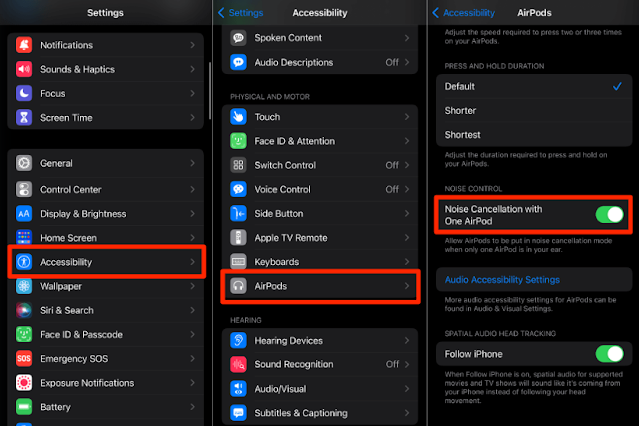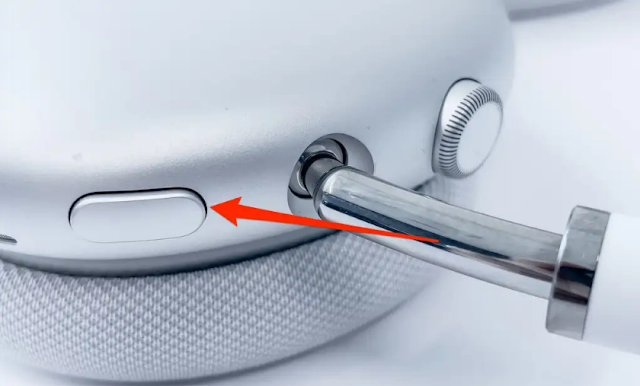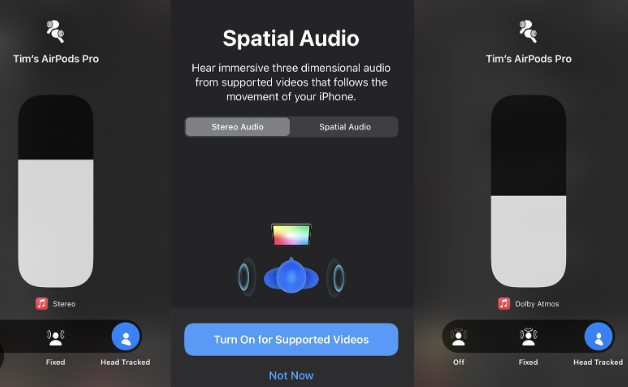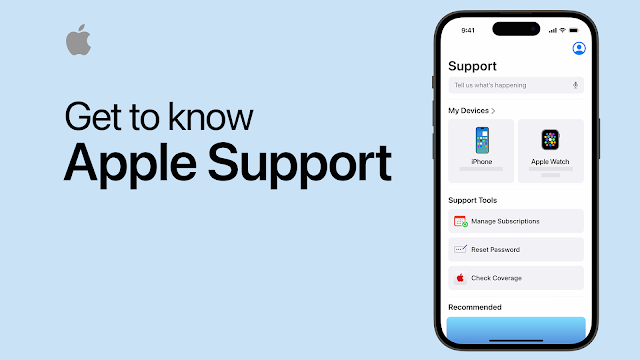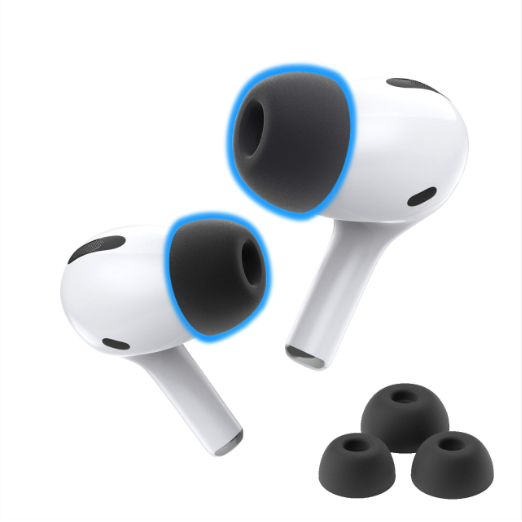Welcome to a place where audio transcends the ordinary. The world of AirPods Pro. These sleek wireless noise cancelling earbuds, designed by Apple, are not just a listening device. They are a gateway to an audio experience like no other. In this introductory portion, we continue on a trip to uncover the core of AirPods Pro, with a special focus on its innovative noise-canceling feature.
Imagine a technology so smoothly integrated into your daily life that it becomes an extension of your sensory experience. AirPods Pro, with its sleek form and cutting-edge technology, reinvented the concept of wireless earbuds. Let’s take a moment to acquaint ourselves with the characteristics that make these earbuds a standout in the audio world, with a special focus on their excellent noise-canceling prowess.
While AirPods Pro offers an unmatched audio experience, customers may discover challenges in achieving the full power of noise canceling. From fit challenges to unanticipated disruptions, we’ll travel through the common issues users confront, setting the stage for our exploration into troubleshooting and optimization in the parts to come.
Join us as we journey on this odyssey through the world of AirPods Pro, where innovation meets sound perfection. Whether you’re a seasoned user or a beginner to the AirPods Pro universe, this blog post is your compass to unlocking the secrets of a completely immersive audio trip.
AirPods Pro Noise Cancelling
Active Noise Cancellation (ANC) technology has changed the way we hear music, giving an immersive and uninterrupted listening environment. The AirPods Pro, paired with enhanced ANC, increases this experience to the next level. To completely appreciate how to fix noise canceling issues, it’s important to look into the workings of this cutting-edge technology.
Active Noise Cancellation (ANC) Technology of AirPods Pro
AirPods Pro uses microphones to detect external sounds and then make anti-noise to cancel them out. This real-time method develops at an incredible velocity, allowing consumers to enjoy their audio content without the intrusion of ambient noise. The use of Apple’s H1 chip boosts the efficiency of this technology, making the AirPods Pro an impressive listening companion.
Common Reasons for Noise Cancelling Malfunctions
Despite the advanced technology of ANC in AirPods Pro, various circumstances can contribute to malfunctions
1. Software Glitches
Issues can develop because of bugs or software discrepancies.
2. Poor Ear Tip Fit
If the ear tips do not produce a sufficient seal, the ANC performance can be hampered.
3. Physical Damage
Accidental damage or wear and tear can compromise the internal components responsible for noise cancellation.
Impact on Sound Quality and User Experience
The significance of good noise suppression extends beyond just peace and quiet. It immediately influences the sound quality, allowing users to enjoy music, podcasts, and calls with amazing clarity. A defective ANC not only upsets this experience but can also contribute to pain, as users find themselves more vulnerable to the intrusion of extraneous noise.
Identifying Common Issues on AirPods Pro
As customers immerse themselves in the world of audio with AirPods Pro, discovering troubles with noise cancellation can be an unpleasant experience. Identifying these common difficulties is the first step toward restoring the crystal-clear sound and immersive experience these earbuds promise.
1. Unresponsive or Inconsistent ANC
Symptoms: Users may discover that the noise canceling feature is either not engaging or is uneven in its performance.
Possible Causes: This issue could come from software errors, outdated firmware, or problems with the ear tip fit.
2. Distorted Sound During Noise Cancellation
Symptoms: Audio quality may worsen, becoming distorted or muffled when ANC is used.
Possible Causes: Software flaws, conflicting settings, or even a compromised internal component may lead to this situation.
3. Background Noise Leakage:
Symptoms: Despite active noise cancellation, users may still suffer an intrusion of external sounds.
Possible Causes: Poor ear tip fit, obsolete software, or even damage to the internal hardware might contribute to sound leaking.
Identifying these typical difficulties lays the framework for effective troubleshooting. It’s vital to pay attention to tiny variations in audio quality and performance, as they can offer valuable insights into the exact problem affecting your AirPods Pro.
Troubleshooting Steps
Now that we’ve discovered frequent issues affecting the noise cancellation on your AirPods Pro, let’s dig into practical troubleshooting procedures to address these concerns and restore the flawless audio experience you deserve.
1. Check AirPods Settings
Noise Cancellation won’t activate on AirPods Pro when using just one AirPods. You need to have both (left and right) earphones in your ears to enable Noise Cancellation. If you wish to use Noise Cancellation with one AirPod, enable the option in your iPhone or iPad’s settings menu. Here’s how to do that
- Open the Settings app on your iPhone/iPad and select Accessibility.
- Select AirPods in the “Physical and Motor” section.
- Toggle on Noise Cancellation with One AirPod.
Now you’ll be able to enable Noise Cancellation with AirPod in one ear. It’s a terrific accessibility feature for AirPods users with hearing impairment or handicap in one ear.
2. Re-Enable Noise Cancellation on AirPods Pro
If your AirPods do not block background noises, switch to a different noise-control mode and go back to Noise Cancellation mode. You can switch noise-control modes immediately from your AirPods.
For AirPods Pro, place both AirPods in your ears and press and hold the Force Sensor on either the left or right AirPod. That will enable or activate Transparency Mode. Then, press and hold the Force Sensor again to switch back to Noise Cancellation mode.
Force Sensor: When using the AirPods Max, press the Noise Control button on the headphones to switch between Noise Cancellation and Transparency modes.
Noise Control button: You may also remotely swap your AirPods between Noise Cancellation and Transparency modes on your Apple devices.
3. Check Noise Control Modes
Your AirPods Pro also offers Transparency mode, which enhances your ability to hear ambient sound while enjoying your favorite music, podcasts, and other audio material. If you experience background noise when listening to music, it may be because you’re in Transparency mode.
To switch between modes, just press and hold the force sensor on either AirPod’s stem. Alternatively, while your AirPods are linked to your iPhone, you may also change between noise control modes directly from your phone by following these instructions,
- Swipe down from the top-right corner of your iPhone’s screen to open the Control Center. On older iPhones with a Home button, you’ll need to swipe up from the bottom instead.
- Long-press on the Volume slider.
- Tap Noise Control. Then, select Noise Cancellation to switch to active noise cancellation.
4. Re-pair the AirPods with the Apple Device
If the profiling between the AirPods Pro and your Apple smartphone is no longer valid, it will impact the communication settings such as noise cancellation. In such a circumstance, re-pairing the AirPods Pro with the Apple smartphone will fix the problem.
- Launch the iPhone Settings and navigate to Bluetooth.
- Tap on the More Info icon for your AirPods Pro and select Forget This Device.
- Confirm to execute the action and restart your iPhone.
- Pair the phone with the AirPods Pro.
- Enable Noise Cancelling and test if it is working appropriately.
5. Reset the AirPods to Their Default Settings
The noise canceling on AirPods Pro will fail to activate if the firmware of your pods is invalid. The current update to the firmware might have caused the issue. Here, resetting the AirPods to their default settings will cure the problem.
- Charge the case and AirPods Pro to at least 80%.
- On the iPhone, navigate to Settings > Bluetooth.
- Open the AirPods and touch on Forget This Device.
- Then must repeat the same with all other devices where AirPods were paired iPad, Mac, etc.
- Put the AirPods into the charging case and keep its top open.
- Press/hold the Setup button on the back of the casing till the light changes from amber to white. This will take roughly 15 seconds.
- Do not close the lid of the case and wait for another 15 minutes.
- Restart the phone and pair it with the AirPods.
- Enable Noise Cancelation and see if the issue is resolved.
6. Resetting AirPods Pro to Factory Settings
Step-by-Step Guide: Begin by resetting your AirPods Pro. This involves an easy technique that clears potential errors.
Explanation: Resetting your AirPods Pro can cure various issues related to connectivity, software errors, and, in rare circumstances, problems with noise suppression. The step-by-step guide guarantees you complete this action correctly.
7. Checking for Software Updates
The Importance of Updates: Ensure your AirPods Pro firmware and software are up to current. Manufacturers often offer updates to improve performance and resolve recognized concerns.
How to Check and Update: Learn how to check for the newest firmware and software upgrades, ensuring that your AirPods Pro is equipped with the latest enhancements and bug fixes.
8. Adjusting Ear Tip Fit
Role of Proper Fit: Understand the important function of a suitable ear tip fit in enhancing noise cancellation.
Tips for Selection and Fit: Learn how to choose the best ear tips for your AirPods Pro and ensure they are properly positioned in your ears. A secure fit is required for efficient noise cancellation.
9. Disable Spatial Audio
Spatial Audio lets you enjoy surround sound on the AirPods. This surround sound can interfere with the pod’s noise detection and so create the issue. In such a circumstance, deactivating Spatial Audio will solve the problem.
- Launch the iPhone Settings and navigate to Bluetooth > AirPods Pro.
- Disable Spatial Audio and see whether the problem is solved.
- If Spatial Audio is already disabled, enable it and check if it clears the issue.
10. Cleaning AirPods Pro
Debris and Earwax Impact: Recognize the influence of dirt and earwax on your AirPods Pro performance.
Safe Cleaning Methods: Discover safe and practical techniques to clean your AirPods Pro, eliminating potential harm and preserving optimal operation.
11. Contacting Apple Support
When and How to Reach Out: Understand when it’s appropriate to seek professional assistance from Apple Support.
Providing Relevant Information: Learn what information to have on hand when contacting support, supporting a smoother and more effective resolution process.
12. Checking for Hardware Issues
Inspecting Physical Damage: Examine your AirPods Pro for any evidence of physical damage that may be hurting noise cancellation.
Steps for Suspected Hardware Issues: If hardware faults are detected, discover the actions to take and whether your device may be eligible for warranty or repair services.
By following these troubleshooting instructions, you may address a wide range of noise-canceling difficulties on your AirPods Pro. Whether it’s a simple reset, assuring correct ear tip fit, or maintaining cleanliness, these actions empower you to take control of your audio experience.
Preventive Measures
Now that you’ve successfully handled noise cancellation issues on your AirPods Pro, it’s time to study preventive steps to preserve optimal performance and avoid future disruptions. Proactive care can go a long way in protecting the functioning of your AirPods Pro.
1. Tips for Maintaining Optimal Performance
Storage and Protection: Properly store your AirPods Pro in their case when not in use to prevent damage and retain their performance.
Avoiding Excessive Conditions: Protect your AirPods Pro from excessive temperatures and humidity, as these environmental variables can influence their function over time.
2. Regularly Updating Firmware and Software
Benefits of Updates: Understand the importance of keeping your AirPods Pro firmware and software up to date.
Setting Up Automatic Updates: Learn how to set up automatic updates to ensure that your device is always running the newest software for greater performance and bug fixes.
3. Proper Ear Tip Care
Regular Inspection: Periodically examine the condition of your ear tips for wear and tear, and replace them if necessary.
Cleaning plan: Incorporate a mild cleaning regimen to eliminate debris and earwax, preventing difficulties connected to poor ear tip fit.
By implementing these preventive actions, you may prolong the life of your AirPods Pro and lessen the possibility of suffering noise-canceling issues. Remember, continuous care and attention to detail contribute considerably to a seamless and enjoyable listening experience.
4. Reduce Background Noise
Your AirPods Pro detects exterior sounds using outward-facing microphones to make an active noise-cancellation function. These sounds are then countered with anti-noise, which cancels them before you hear them. Additionally, an inward-facing microphone in your AirPods Pro listens for undesirable sounds within your ear and counters them with anti-noise.
This means that the effectiveness of active noise suppression will rely on how loud the background noise is. So, if you’re in a particularly noisy environment, you’ll need to find a technique to lower the ambient noise or move to another place for the function to perform optimally.
Conclusion
In the domain of audio perfection, AirPods Pro stands out for its cutting-edge technology and immersive sound experience. However, like with any technological equipment, occasional issues may develop, particularly in the field of noise cancellation. By completing the complete troubleshooting methods provided in this article, you’ve taken a proactive approach to restoring the full potential of your AirPods Pro.
As you move forward, remember that your AirPods Pro are not simply earbuds. They’re a portal to a world of exceptional audio experiences. By combining the troubleshooting and preventive steps outlined, you’re not only addressing present issues but also securing your future listening initiatives.
In the ever-evolving realm of technology, remaining informed and implementing best practices ensures that your audio equipment continues to offer the great performance you demand. Here’s to a future filled with continuous, crystal-clear sound and the joy of seamless, immersive audio experiences with your AirPods Pro.



